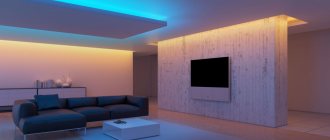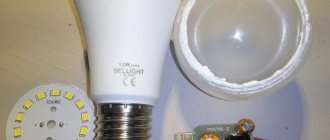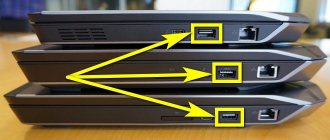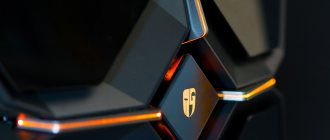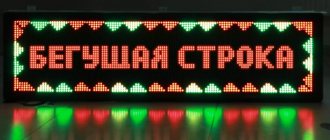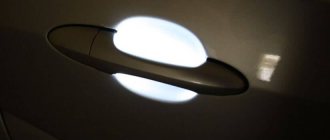If there are old monitors and non-working laptop matrices in your house, do not rush to throw them in the trash. If you have a soldering iron and minimal knowledge of electrical engineering, useless items can be used to create LED lights that will do a great job illuminating a workspace in a room or garage. If you power your homemade LED design with a battery, it will become an excellent portable system. This article talks about how to turn an unnecessary thing into a useful device.
↑ God once sent a piece to the crow... two pieces!
One spring, walking past a trash can, I saw a white plate with a steel edging.
The device clearly did not fit into the basket properly and therefore attracted my attention. When I took out THIS, I was very surprised. Baaah, yes, this is a broken LCD panel from a 9/16 widescreen monitor! But something is clearly missing, such as high-voltage wires from the backlight. Having carefully examined it, I realized that the backlight was LED. There are as many as 6 lines in the cable. When asked where this wonderful miracle came from, I received the answer: yes, they forgot to remove the pencil from this laptop... But they hit the lid, the poor thing led. Yeees! People bought a lot of laptops, but the “shepherds” remained! So I ended up with two broken matrices. The initial googling did not yield results on the m/s power supply for the lights... I put it aside, and there was no time... Naturally, I took out the glass and threw it away, leaving the light guide with diffusers, I looked at the LEDs, 40 pieces in 1 row. And now, six months later, I come across the panels again, already at home. Eh, I was - I wasn’t, a tester in my teeth, a foamy drink, an Internet keyboard. I came across a similar m/s and off I went, now I have a keyboard backlight above my desk, I made a backlight for a friend in the trunk of a car.
How Ambilight and its analogues work
First you need to understand how it all works. A special module captures and analyzes the image on the screen to understand the color of the area around the perimeter of the matrix. After this, a similar signal is sent to the addressable RGB strip located behind.
Capture is performed several times per second, and the glow of the diode strip behind is updated at the same frequency. Of course, this requires serious resources. The higher the image resolution, the more pixels have to be processed during capture.
All solutions that replicate Ambilight technology are divided into two types: based on an external decoder or based on a set-top box.
◉ The first type is a separate box with an HDMI input and a similar output. Inside is a small single board computer (most often based on a Raspberry Pi) that accepts the output signal from any source. TV set-top boxes or consoles can be connected to the input. The capture process takes place inside, and the output image is displayed on the TV.
The advantage of this solution is ease of connection. No complex circuits, additional software or settings. The box is simply placed between the signal source and its receiver (TV).
The disadvantage of such a box is also obvious - most often it will produce a picture worse than at the input. The power of the module may not be enough to rebroadcast 4K, sometimes there will be no support for HDR, there are cases when the boxes do not support the required FPS or simply do not transmit surround sound. Here everything depends either on the power of the filling or on the standard of the HDMI port.
